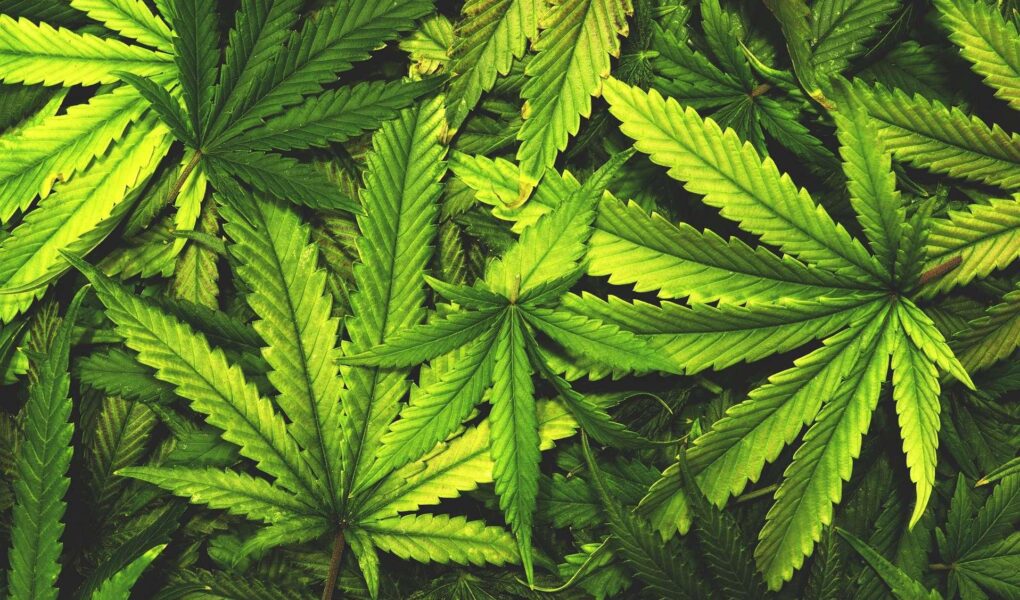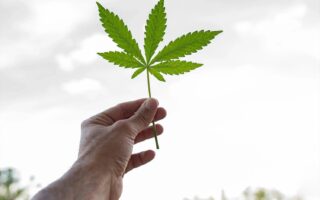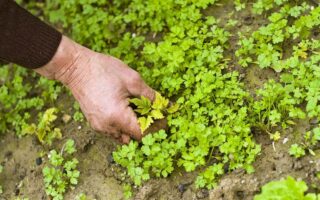In a world increasingly curious about alternative lifestyles and natural remedies, cannabis has emerged as a topic of both fascination and contention. From its ancient medicinal use to its contemporary role in wellness, recreational use, and ongoing legal debates, cannabis invites a myriad of interpretations and opinions. But what exactly is cannabis? At its core, this versatile plant is more than just the source of a popular recreational substance; it holds a complex profile shaped by its rich history and diverse applications. In this article, we will explore the intricate layers of cannabis, delving into its biological characteristics, cultural significance, and evolving role in society. Whether you’re a curious newcomer or a seasoned enthusiast, join us as we uncover the essence of cannabis and its many meanings in today’s world.
Table of Contents
- Understanding Cannabis: Origins and Types
- The Science Behind Cannabis: Components and Effects
- Navigating Legalities: Cannabis in Contemporary Society
- Practical Tips for Responsible Use and Consumption
- Q&A
- The Conclusion
Understanding Cannabis: Origins and Types
Cannabis, a versatile plant with a storied history, has been utilized for thousands of years across various cultures. Its origins trace back to Central Asia, where it was first domesticated for its fibers, seeds, and psychoactive properties. Over the ages, cannabis found its way into traditional medicine, spiritual rituals, and even recreational use. Today, it is recognized not only for its economic importance but also for its potential applications in health and wellness, leading to the growing acceptance of its use in various forms around the world.
When it comes to understanding the different types of cannabis, there are primarily three main categories: Indica, Sativa, and Hybrid. Each type boasts distinct characteristics and effects. Indica strains are often associated with relaxation and sedative effects, making them preferable for nighttime use. Conversely, Sativa strains typically provide uplifting and energizing effects, ideal for daytime consumption. Hybrids, as the name implies, combine elements from both Indica and Sativa, resulting in a vast array of choices tailored to individual preferences and desired outcomes. Below is a summary table highlighting these types:
| Cannabis Type | Common Effects | Best Used For |
|---|---|---|
| Indica | Relaxation, Sedation | Nighttime or Stress Relief |
| Sativa | Energy, Euphoria | Daytime or Creative Activities |
| Hybrid | Balanced Effects | Customizable Use |
The Science Behind Cannabis: Components and Effects
Cannabis is a complex plant with a rich tapestry of chemical compounds that interact with the human body in fascinating ways. The two primary components that have garnered significant attention are tetrahydrocannabinol (THC) and cannabidiol (CBD). THC is well-known for its psychoactive effects, often resulting in the characteristic “high” associated with marijuana. In contrast, CBD has gained popularity for its potential therapeutic benefits without the intoxicating effects. Together, these compounds, along with more than a hundred other cannabinoids, terpenes, and flavonoids, create a unique profile for each strain, influencing not just the experience users have but also the medicinal benefits they may receive.
Understanding the effects of cannabis requires a look at the endocannabinoid system (ECS), a complex network that plays a crucial role in maintaining homeostasis within the body. The ECS consists of receptors (CB1 and CB2) found throughout the nervous system and immune system. These receptors interact with cannabinoids, leading to various effects such as pain relief, mood regulation, and appetite stimulation. Here’s a brief overview of how different cannabinoids impact the ECS:
| Cannabinoid | Primary Effect | Common Uses |
|---|---|---|
| THC | Psychoactive | Chronic pain, nausea |
| CBD | Non-psychoactive | Anxiety, seizures |
| CBC | Aids in inflammation | Skin disorders, pain relief |
| CBG | Neuroprotective | Anti-inflammatory, glaucoma |
Navigating Legalities: Cannabis in Contemporary Society
The landscape of cannabis legality has shifted dramatically over the past few decades, transforming from prohibition to acceptance in many parts of the world. Today, individuals and businesses must navigate a complex web of regulations that vary widely by location. This dynamic dialogue around cannabis encompasses various themes including political, social, and economic factors. As legislation evolves, understanding the critical elements of cannabis law becomes essential for safe consumption and investment opportunities. Here are some key aspects to consider:
- State vs. Federal Law: Always check whether cannabis is legal under state law, even if it is prohibited at the federal level.
- Licensing and Regulations: Businesses must acquire correct licenses to operate legally and need to adhere to specific regulations.
- Personal Use Guidelines: Familiarize yourself with laws governing personal use, including possession limits and consumption locations.
- Legal Age: Ensure compliance with age restrictions for purchase and consumption, usually set at 21 years or older.
As new legislation emerges, public perception of cannabis continues to evolve, aligning more closely with its medicinal and recreational uses. Education plays a vital role in this process, influencing not only personal choices but also policy development. Taking supplementary steps to stay informed on cannabis trends can help consumers and entrepreneurs adapt proactively. The following table outlines some pivotal changes in legalization across select regions:
| Region | Legal Status | Year Legalized |
|---|---|---|
| California | Legal for recreational and medicinal use | 2016 |
| Canada | Legal nationwide | 2018 |
| Mexico | Legal for medicinal use | 2017 |
| New York | Legal for recreational and medicinal use | 2021 |
Practical Tips for Responsible Use and Consumption
To ensure a responsible experience with cannabis, it’s essential to prioritize informed decision-making. Start by understanding the strain you are consuming, as different strains may have varying effects. Pay attention to the THC and CBD levels, as these compounds influence psychoactivity and therapeutic properties. Embracing moderation is key; consider setting limits on your consumption to avoid overwhelming effects. It’s also wise to consume in a safe environment where you feel comfortable, whether at home or in the company of trusted friends.
Furthermore, consider the method of consumption, as it can significantly impact your experience. Here are some practical tips to guide your choices:
- Research Different Methods: Explore options like vaporizing, edibles, or tinctures to find what works best for you.
- Start Low and Go Slow: If you’re a novice or trying a new product, start with a small dose and gradually increase it.
- Stay Hydrated: Drinking water can help mitigate dry mouth and enhance your overall experience.
- Know the Laws: Be mindful of local legislation regarding cannabis use and adhere to regulations.
Q&A
Q&A: What is Cannabis?
Q1: What exactly is cannabis?
A1: Cannabis refers to a genus of flowering plants in the family Cannabaceae. It encompasses three primary species: Cannabis sativa, Cannabis indica, and Cannabis ruderalis. Known for its psychoactive properties, cannabis has been utilized for centuries for both medicinal and recreational purposes.
Q2: Why is cannabis so popular?
A2: Cannabis has captured the attention of many due to its diverse range of effects and applications. It offers users varying experiences, from relaxation and euphoria to pain relief and improved sleep. As legalization spreads across the globe, its popularity has surged, drawing people to explore its potential benefits.
Q3: What are the active compounds in cannabis?
A3: The two most well-known active compounds are THC (tetrahydrocannabinol) and CBD (cannabidiol). THC is the primary psychoactive component that produces the “high” associated with cannabis use, whereas CBD is non-psychoactive and is celebrated for its therapeutic effects without the euphoric side effects.
Q4: How is cannabis consumed?
A4: Cannabis can be consumed in various forms, catering to different preferences and lifestyles. Common methods include smoking dried flower in joints or pipes, vaporizing concentrates, consuming edibles like gummies and cookies, or applying topicals for localized relief. Each method produces unique effects and experiences.
Q5: What is the difference between hemp and marijuana?
A5: Hemp and marijuana both come from the Cannabis plant but differ mainly in their THC content. Hemp contains 0.3% THC or less, making it non-psychoactive and ideal for industrial uses such as textiles, paper, and biofuels. Marijuana, on the other hand, is cultivated for its higher THC content and is primarily used for medicinal and recreational purposes.
Q6: Is cannabis safe to use?
A6: The safety of cannabis use depends on various factors, including dosage, individual tolerance, and the presence of any underlying health conditions. While many people use cannabis without adverse effects, it can cause side effects such as anxiety or paranoia in some users. It’s essential to consult with healthcare professionals and be informed before using cannabis.
Q7: What therapeutic benefits does cannabis offer?
A7: Research suggests that cannabis may be effective in managing several conditions, including chronic pain, anxiety, epilepsy, and nausea related to chemotherapy. However, its effects can vary significantly among individuals. Ongoing studies are working to further understand the full range of its therapeutic potential.
Q8: What is the future of cannabis legalization?
A8: The future of cannabis legalization appears to be trending positively, with more regions recognizing its potential benefits. As social attitudes shift and research expands, it is likely that more areas will legalize its recreational and medicinal use, leading to increased regulation, safety standards, and accessibility.
Q9: Can anyone grow cannabis?
A9: Growing cannabis is subject to local laws and regulations. In some places, individuals are allowed to cultivate cannabis for personal use, while in others, it remains strictly regulated or prohibited. When allowed, growers must often adhere to specific guidelines, such as limits on plant numbers and security measures.
Q10: How can I stay informed about cannabis?
A10: Staying informed about cannabis involves keeping up with scientific research, legal developments, and community discussions. Engaging with reputable publications, attending seminars, and following expert opinions can foster a well-rounded understanding of the evolving landscape of cannabis.
cannabis is a complex plant with a rich history, broad applications, and an ever-evolving legal and cultural status. Whether for recreational enjoyment or medicinal support, understanding its fundamentals can help individuals make informed choices.
The Conclusion
As we draw the curtain on our exploration of cannabis, it’s clear that this multifaceted plant has carved a complex niche in both history and contemporary society. From its ancient uses in medicine and textiles to its recent surge in popularity as a wellness and recreational option, cannabis invites a conversation steeped in both tradition and innovation. As we continue to uncover the scientific mysteries surrounding it and navigate the ever-evolving legal landscape, it’s essential to approach cannabis with curiosity and an open mind. Whether you’re a seasoned enthusiast or a curious newcomer, understanding what cannabis truly is—its benefits, challenges, and potential—can empower informed choices that resonate on personal and societal levels. The journey of cannabis is far from over, and as it continues to sprout into new realms, we encourage you to stay engaged, informed, and thoughtful in your interactions with this remarkable plant.



